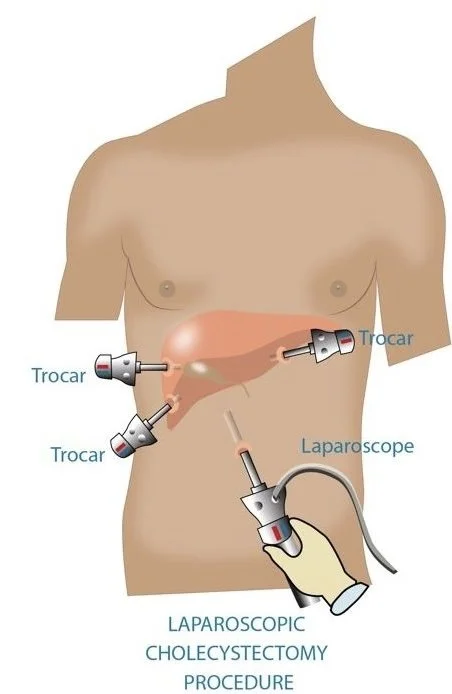Laparoscopic Cholecystectomy
Laparoscopic Cholecystectomy is a minimally invasive surgical procedure to remove the gallbladder. It is the preferred method for treating gallstones and their associated complications. Here's a brief description:
During the procedure:
1. Typically, 3-4 small incisions are made in the abdomen.
2. Carbon dioxide gas is introduced into the abdominal cavity to create a workspace for the surgeon.
3. A laparoscope, a long instrument with a camera on its tip, is inserted through one of the incisions, allowing the surgeon to view the operative area on a monitor.
4. Specialized surgical instruments are inserted through the other incisions to detach and remove the gallbladder.
5. Once the gallbladder is removed, the incisions are closed with sutures, staples, or surgical glue.
Advantages:
- Reduced pain post-operatively.
- Shorter hospital stay, often allowing for same-day discharge.
- Quicker recovery compared to open surgery.
- Smaller scars.
Potential complications are rare but can include bile duct injury, bleeding, infection, and hernia at the incision sites. As with all surgeries, it's crucial to discuss potential risks and benefits with the treating surgeon.
Learn about our latest pieces.
-
It all begins with an idea. Maybe you want to launch a business. Maybe you want to turn a hobby into something more.
-
It all begins with an idea. Maybe you want to launch a business. Maybe you want to turn a hobby into something more.
-
It all begins with an idea. Maybe you want to launch a business. Maybe you want to turn a hobby into something more.

